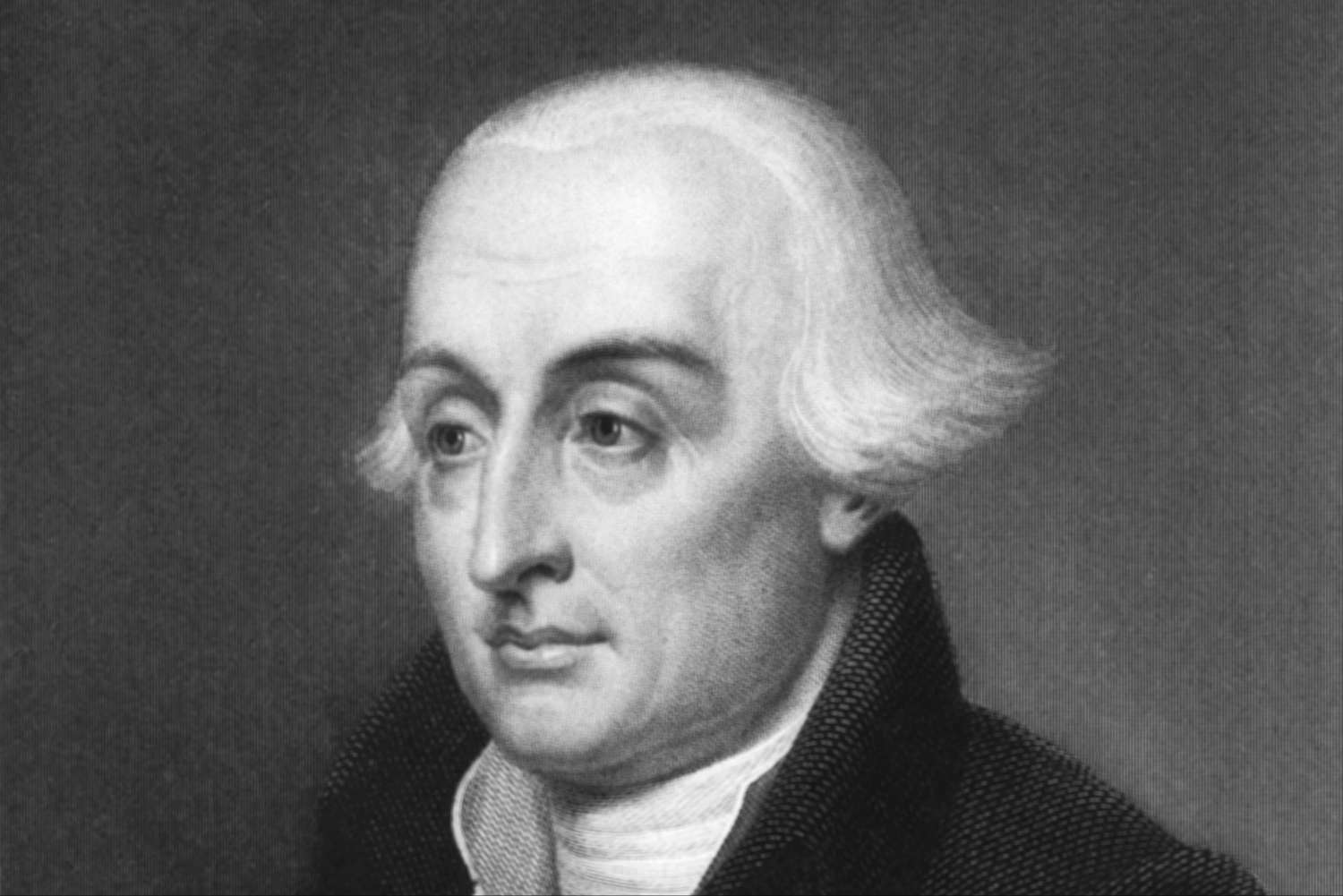
Joseph-Louis Lagrange, a mathematician and astronomer, is undoubtedly one of the most influential figures in the field of mathematics. Born in Turin, Italy, in 1736, Lagrange revolutionized various branches of mathematics, including calculus, number theory, and analytical mechanics.
His groundbreaking contributions earned him a reputation as one of the greatest mathematicians of his time. Lagrange’s work on the theory of equations, known as the “Lagrange interpolation,” laid the foundation for modern algebraic methods.
Throughout his career, Lagrange held prestigious academic positions and won numerous awards and honors. His exceptional intellect and analytical skills allowed him to solve complex mathematical problems that had eluded other mathematicians for centuries.
In this article, we will delve into the astonishing life and achievements of Joseph-Louis Lagrange, uncovering sixteen astounding facts that highlight his immense contributions to the world of mathematics and science.
Key Takeaways:
- Joseph-Louis Lagrange, an Italian mathematician and astronomer, made groundbreaking contributions to mathematics, celestial mechanics, and physics. His work on Lagrange points and the principle of least action revolutionized space exploration and classical mechanics.
- Lagrange’s mathematical brilliance and innovative thinking have left an indelible mark on the field of mathematics. His concepts, such as the Lagrangian function and Lagrange multipliers, continue to influence contemporary mathematics and physics.
Early Life and Education
Joseph-Louis Lagrange, born Giuseppe Lodovico Lagrangia, was an Italian mathematician and astronomer. He was born on January 25, 1736, in Turin, Italy. From a young age, Lagrange displayed exceptional mathematical talents and went on to study at the Royal Military Academy in Turin.
Contributions to Mathematics
Lagrange made significant contributions to various branches of mathematics, including number theory, calculus, and mechanics. His work on the theory of equations and the calculus of variations revolutionized these fields.
Lagrange Points
Lagrange is renowned for his discovery of the Lagrange points, which are five specific points in space where the gravitational forces of two large bodies, such as the Earth and the Moon, balance the centrifugal force felt by a smaller object in their vicinity. These points have proven crucial for space exploration and satellite placement.
The Principle of Least Action
Lagrange formulated the principle of least action, also known as the Hamiltonian principle, which states that the path taken by a dynamical system between two points in time is the one that minimizes the action integral. This principle is fundamental in classical mechanics and has applications in various areas of physics.
Academia and Collaborations
Lagrange held prestigious academic positions throughout his career, including being appointed as a professor at the Prussian Academy of Sciences in Berlin. He collaborated with renowned mathematicians and scientists of his time, such as Leonhard Euler and Pierre-Simon Laplace.
The Lagrangian Function
Lagrange introduced the concept of the Lagrangian function, which is a key element in Lagrangian mechanics. This function describes the dynamics of a mechanical system and is utilized in solving complex problems related to motion and forces.
Voltaire’s Praise
The famous French philosopher Voltaire once called Lagrange “le diable boiteux,” which translates to “the limping devil,” as a playful reference to his polio-induced limp. This nickname is a testament to both Lagrange’s physical challenges and his genius in mathematics.
Mathematical Notation
Lagrange developed some of the mathematical notation that is still in use today, including the notation for differentiation and integration. His contributions to standardizing mathematical symbols have greatly facilitated mathematical communication and notation.
Celestial Mechanics
Lagrange made significant contributions to celestial mechanics, particularly in analyzing the motions of celestial bodies. His research on the stability of the solar system and the three-body problem greatly influenced the field of astronomy.
Lagrange Multipliers
Lagrange developed a method called Lagrange multipliers, which is widely used to solve optimization problems subject to equality constraints. This technique has applications in various disciplines, including economics, physics, and engineering.
The Turin Academy Prize
In 1758, Lagrange won the prestigious Turin Academy Prize for his essay on the libration of the Moon. This achievement marked the beginning of his illustrious career and established him as a leading mathematician of his time.
Royal Society Membership
Lagrange was elected as a foreign member of the Royal Society in London, a highly regarded honor among scientists and mathematicians. His contributions to the field of mathematics were recognized and celebrated by his peers.
Lagrange’s Equation
Lagrange formulated a powerful equation, now known as Lagrange’s equation of motion, which describes the dynamics of a system in terms of generalized coordinates, velocities, and forces. This equation has applications in classical mechanics and theoretical physics.
Scientific Legacy
Lagrange’s work continues to influence contemporary mathematics and physics. His methodologies and concepts are still taught and applied in universities and research institutions worldwide, highlighting the timeless nature of his contributions.
Monument in Turin
To honor Lagrange’s contributions, a monument was erected in Turin, Italy. The statue pays homage to his remarkable achievements and serves as a symbol of his enduring legacy in the world of mathematics and science.
The Impact of Lagrange’s Work
The discoveries and theories developed by Joseph-Louis Lagrange have had far-reaching implications in multiple scientific disciplines. His mathematical brilliance and innovative thinking have left an indelible mark on the field of mathematics, making him one of the foremost mathematicians in history.
Conclusion
Joseph-Louis Lagrange was a remarkable mathematician and astronomer whose contributions continue to influence the field today. From his groundbreaking work in celestial mechanics to his development of the calculus of variations, Lagrange’s impact on mathematics and physics cannot be overstated. His innovative approaches and deep insights revolutionized these disciplines, and his concepts are still taught and applied in academic settings.Lagrange’s dedication to his work, combined with his exceptional intellect, allowed him to make significant advancements in the understanding of celestial bodies, planetary orbits, and the mathematical principles underlying these phenomena. His elegant solutions and mathematical rigor paved the way for future discoveries and served as a foundation for subsequent research.While Lagrange’s life was filled with challenges and relocations, he never wavered in his pursuit of knowledge. His prolific career, spanning several countries and institutions, earned him numerous accolades and recognition from fellow scientists and mathematicians.Joseph-Louis Lagrange’s legacy stands as a testament to the power of human intellect, curiosity, and determination. His contributions continue to inspire and shape our understanding of the universe, leaving a lasting impact on the scientific community.
FAQs
1. What were Joseph-Louis Lagrange’s main areas of expertise?
Joseph-Louis Lagrange was highly proficient in the fields of mathematics and astronomy. He made significant contributions to celestial mechanics, calculus of variations, and theoretical physics.
2. Where did Joseph-Louis Lagrange conduct his research?
Lagrange conducted research and held academic positions in several European countries, including Italy, Prussia, and France. He worked at prestigious institutions such as the University of Turin and the Berlin Academy of Sciences.
3. What are some of Joseph-Louis Lagrange’s notable achievements?
Some of Lagrange’s notable achievements include the discovery of the Lagrangian points in celestial mechanics, the formulation of Lagrange’s equations in mechanics, and his groundbreaking work on the calculus of variations.
4. How did Joseph-Louis Lagrange’s work impact future mathematicians and scientists?
Lagrange’s work laid the foundation for many advancements in mathematics and physics. His concepts and methods have been widely adopted and built upon by future mathematicians and scientists, shaping the understanding of celestial mechanics and mathematical principles.
5. What is Joseph-Louis Lagrange’s lasting legacy?
Lagrange’s legacy is one of brilliance and innovation. His ideas and findings continue to be studied and applied in various disciplines, influencing generations of mathematicians, astronomers, and physicists.
Lagrange's groundbreaking work in mathematics and physics continues to shape our understanding of the universe. His contributions to celestial mechanics, particularly the concept of Lagrange points, offer fascinating insights into the delicate balance of gravitational forces. Beyond his work on orbital dynamics, Lagrange's four-square theorem remains a captivating area of study for mathematicians and number theory enthusiasts alike. Explore more about these intriguing topics and uncover the lasting impact of Lagrange's brilliant mind.
Was this page helpful?
Our commitment to delivering trustworthy and engaging content is at the heart of what we do. Each fact on our site is contributed by real users like you, bringing a wealth of diverse insights and information. To ensure the highest standards of accuracy and reliability, our dedicated editors meticulously review each submission. This process guarantees that the facts we share are not only fascinating but also credible. Trust in our commitment to quality and authenticity as you explore and learn with us.


